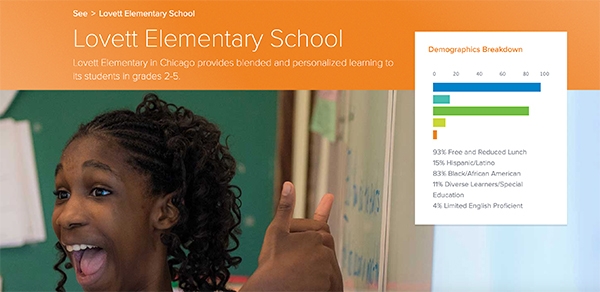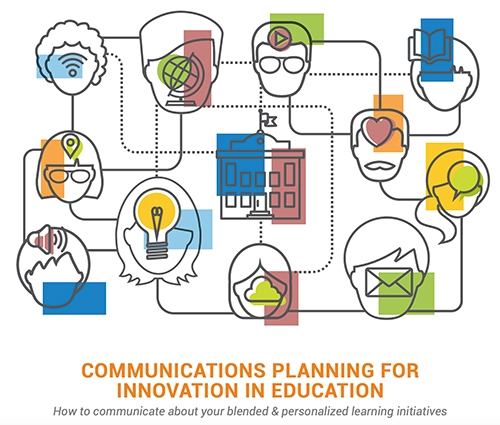Key Takeaways
- Leaders supporting educators transitioning to innovative environments will understand the importance of creating time to share key components of the community with new teachers.
- Professional development (PD) and training designers will explore various ways schools, districts, and networks have communicated their community's story and build time into their onboarding programs to share specific ways for teachers to engage the community throughout the year.

What is the problem?
When designing onboarding for new teachers (new to the school or to teaching), many leaders focus on elements like instructional practices, HR requirements, scheduling, and team-building – all of which are important. However, designers sometimes forget a vital component for success: getting to know the community, both inside and outside the school. Understanding and viewing the community as an ally in education can make the difference between a successful and unsuccessful first year. Building a curriculum without thinking about cultural relevance or failing to connect with and learn from students’ families can cause educators to miss out on opportunities to grow relationships and build trust within their communities.
In order to address this challenge and ensure all new teachers have a clear understanding of the community and how to engage community members, PD designers must consider these key questions:
- What is your community’s story? What are the demographics of your school and community?
- How do you engage parents?
- Who are your community partners? Why are they important in supporting this work?
Why is it important?
Communities surrounding schools have a huge impact on students and the schools themselves. Learning about a community and its culture, while also building a partnership of trust with families, can be a vital component to student success.
The research says...
- Effective implementation of culturally relevant education, which requires significant levels of cultural competence and understanding, is positively associated with increases in academic and affective outcomes across content areas (Aronson and Laughter, 2016).
- The majority of teachers entering the profession don’t necessarily come from or deeply understand the diverse cultures and communities in which they will teach. This is particularly true in minority-majority schools. Schools must take steps to ensure their educators are equipped with the knowledge, skills, strategies, and attitudes necessary to work effectively with children from diverse backgrounds and their families (Stachowski & Mahan, 2001).
- Deliberately preparing entering and novice teachers to spend time in the local community (DeAcosta, 1996) can help teachers understand and appreciate how various community organizations and agencies serve the families of the children in their elementary and secondary classrooms.
How: Solution
Creating time to engage teachers in discussion about the demographic makeup of the community and how the community itself can be leveraged to support and inform instruction in meaningful ways is key to a successful onboarding design. The next three sections will share innovative and inspiring ways schools, districts, and networks across the nation have ensured new teachers understand and engage with the communities they serve.
What is your community's story?
As a PD designer, when thinking about how to share your community’s story, it is important to think about both past and present demographics. Has there been a shift in recent years? Has this impacted the school culture, its socioeconomic makeup, and/or specific needs of the students? Understanding and sharing the demographics of a school involves much more than looking at a collection of numbers. It merits listening to the stories of those who live in the community, discovering what surrounds the school, and understanding how these factors affect students' lives. These impacts can be both positive and negative – some factors can lift students up, while others can pull them down. Creating deliberate time for new teachers to learn about the community they serve is a huge part of the puzzle because it influences students’ lives – every day and in multiple ways.

You can take a number of approaches to share your community’s story. You might bring in community members to speak, do neighborhood walks, share specific demographic information, engage teachers in discussion around the history of the neighborhood, or even put together a document to share with new teachers so that they can understand the multifaceted components of the school and community and how this complex system informs innovation and instruction – like Chicago Public Schools’ Blueprint, shared below. Explore this document, along with other school profiles and approaches, to see different ways schools, districts, and networks have illustrated their community's story.
School Profiles:
- Lovett Elementary: Chicago, IL
- Valor Collegiate Academy: Nashville, TN
- Bronx Arena High School: Bronx, NY

How do you engage families?
When designing an onboarding experience for new teachers, it is important for you to do more than just share information about the community. Take time to give new teachers specific examples of how your school, network, or district engages families in meaningful ways. For example, share how the school brings in families throughout the year to learn about the school’s instructional model, their students' learning experiences, or engages families in conversations around student progress, supports, and other elements of their learning.
Explore some engaging examples below collected from various schools, districts, and networks throughout the country. When looking through the strategies and artifacts, ask yourself:
- Which examples could work in my school, district, or network?
- How could I build this into my current onboarding design?
- What changes would I need to make to better support the families my school serves?
Who are your community partners?
As a PD designer, when designing onboarding for new teachers, you need to think about all of the current resources the school uses on a regular basis so new teachers know where to turn when they need support. This list of resources should include community partners that work with your school, network, or district to provide capacity support (e.g., AmeriCorps volunteers, tutors), expertise and professional insights (e.g., social workers, community outreach programs), or even donations (e.g., food, school supplies, office materials). Capturing and sharing all of these resources will support your new teachers and inform current teachers, as well. It is surprising how many teachers are unaware of all of the community supports available to them, which can lead to missed opportunities for educators and students to get what they need when they need it. Explore the artifacts and strategies below (including CPS Blueprint, p. 22-23) to get ideas about how to both engage community partners and build awareness around community supports that already exist.
Take it further
For additional resources on how to effectively communicate innovative practices in education and build engagement, trust, and credibility with multiple stakeholders, check out this guide to communications planning.
